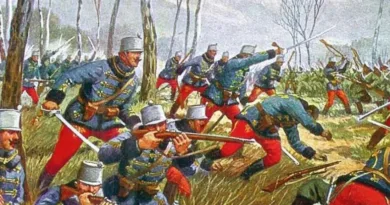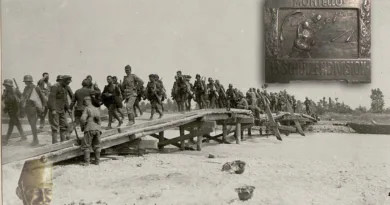January, 1916
In the winter of 1914, the Monarchy received a big slap from little Serbia. The hard-to-occupy areas in the fall of 1914 had to be evacuated due to the simultaneous launch of Russian northern and Serbian southern offenses. In the winter of 1915, however, a new operation against Serbia and Montenegro was launched with the cooperation of the Central Powers, which had already been successful. As part of the last major action of the campaign, on January 10, 1916, the natural fortress, Lovcen, rising above the Gulf of Cattaró was captured. With that, Montenegro’s military defenses collapsed and the capital fell. All that was left for the entente was the evacuation of retreating troops through Albania.
Mount Lovcen rose above the second most important base of the Monarchy Navy. Not only was it possible to follow the activities of the Cattaro fleet base accurately from the mountain, but it was also occasionally disturbed by artillery fire. To this end, French artillery settled on the mountain. Of course, the occupation of Serbia and Montenegro was not due to the mountain being turned off. But the port later played an important role in fleet operations on the Adriatic. The attack on Lovcen began on January 8th. The biggest problem for the significant overpower was the ascent on the steep hillside. Reaching the ridge, the superior force quickly overcame the enemy’s resistance.

The operation against Montenegro was led by general Hermann Kövess. One of his portraits also bears the inscription, “The Conqueror of Montenegro.” After the occupation of Montenegro, Kövess remained the commander of the corps attacking Albania. The IV. battalion of the 33rd Infantry Regiment took part in the attack on Lovcen. This battalion belonged to the 14th Mountain Brigade, which in turn was part of the XIX corps. This corps climbed the mountain from the west, from the bay of Cattaro. The Montenegrins did not expect an attack from this side, their defenses were not confirmed. So they were forced to lay down their arms.

The success of operations on the Balkan had a significant military and political impact. Bulgaria’s entry into the war strengthened the Central Powers and posed a threat to Romania, which was still hesitant. At the same time, a direct connection was established with Turkey. In the Balkans, the Entente remained trapped in Greek ports and still in control of the southern border of Albania.

Among the battlefield inscriptions on the edge of the 33rd Infantry Regiment badge is Lovcen. The order of the names shows that the battles of the mother regiment were listed first, followed by the battles of the separate battalion on the right side of the badge. Heavy artillery from warships stationed in the bay was also used against the mountain. We see this on the badge of the battleship SMS Kaiser Karl VI.




